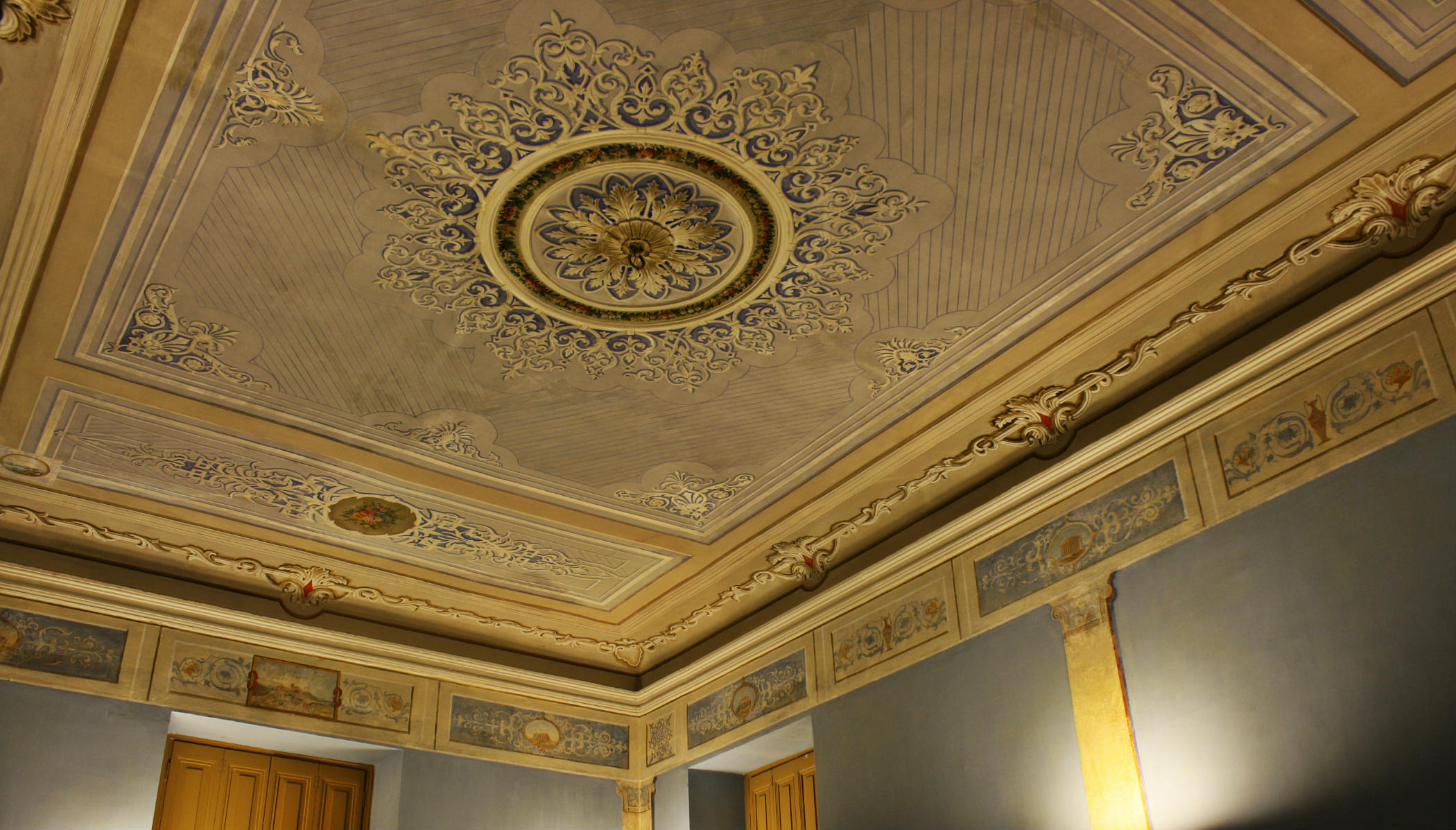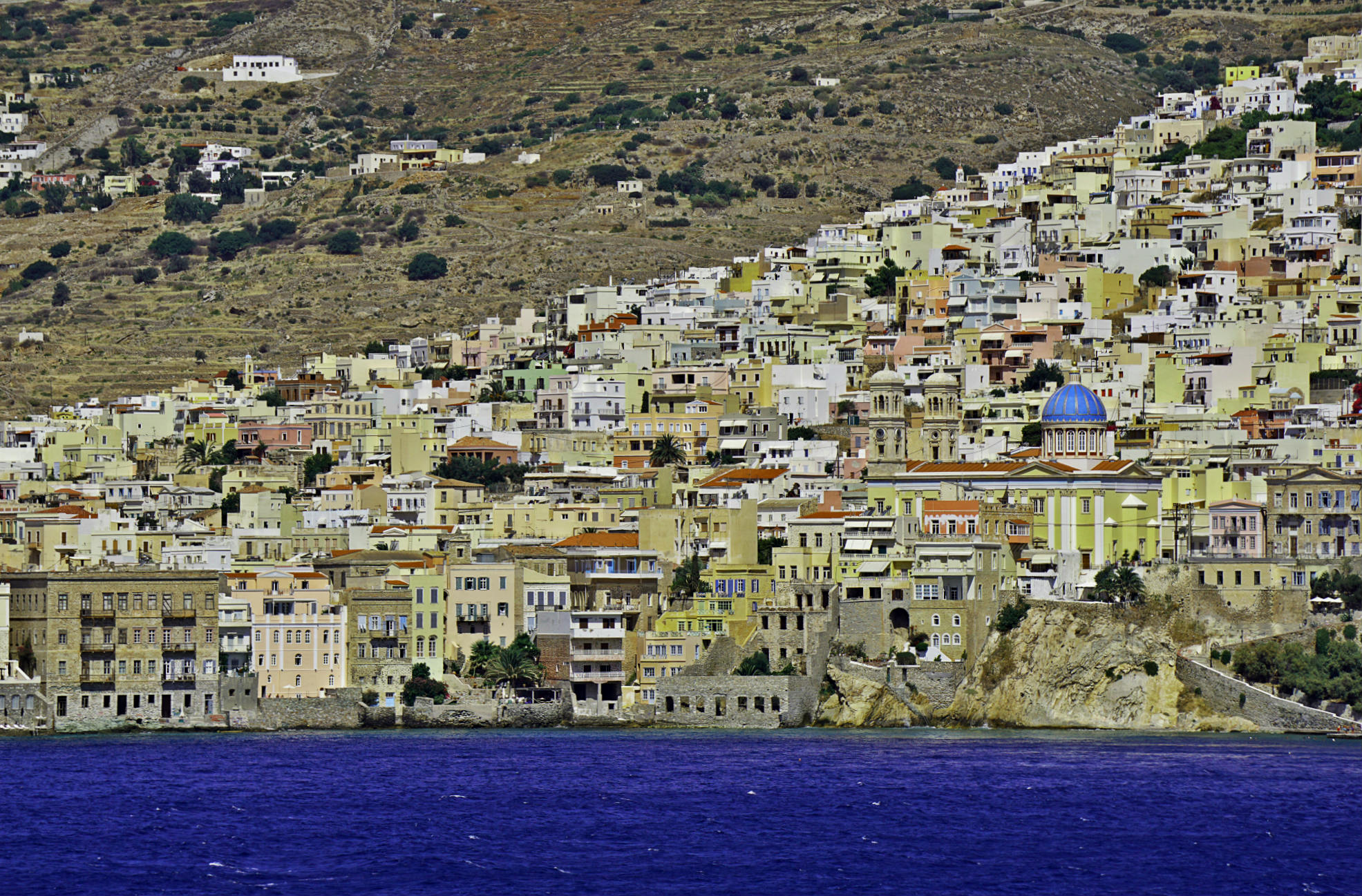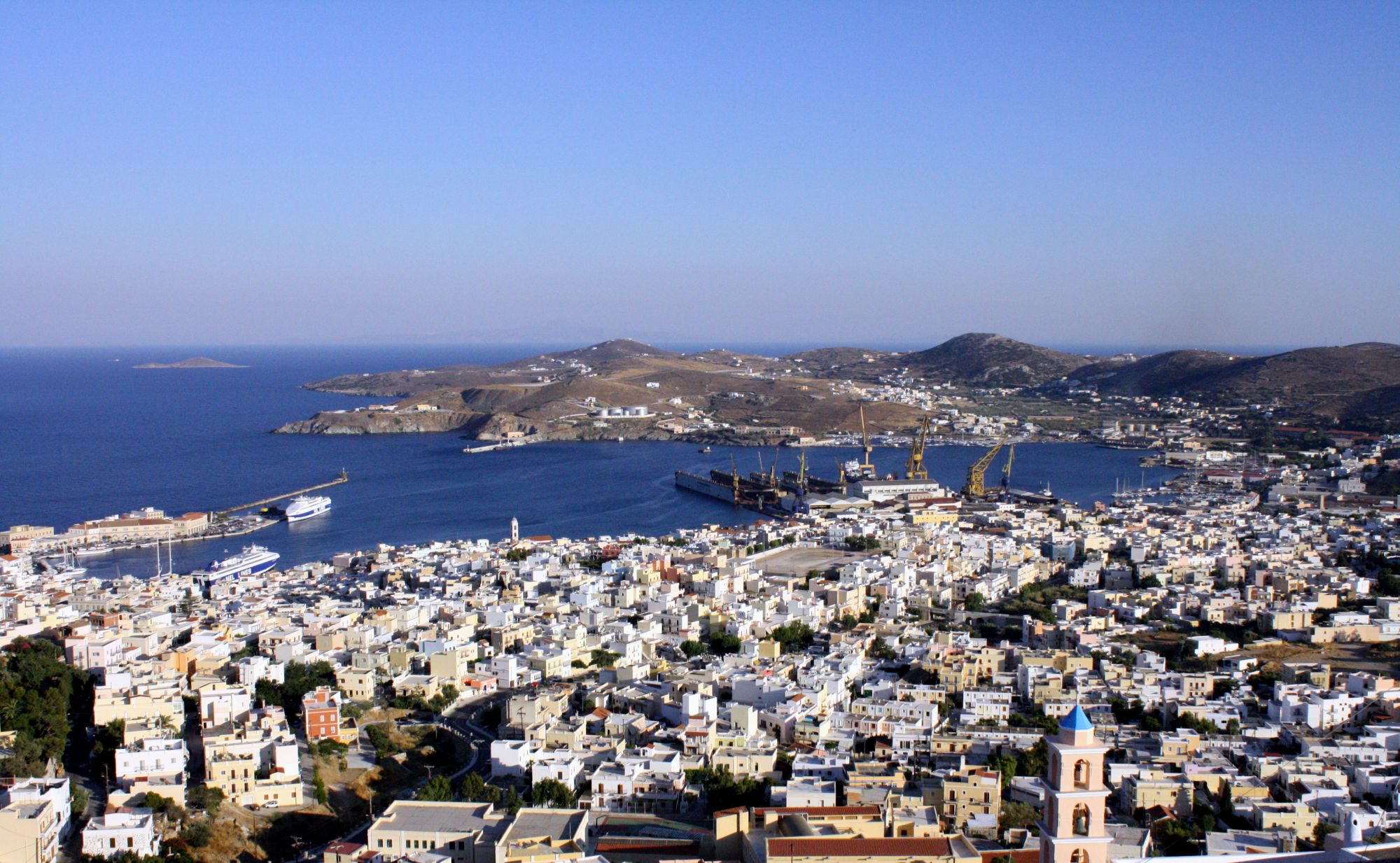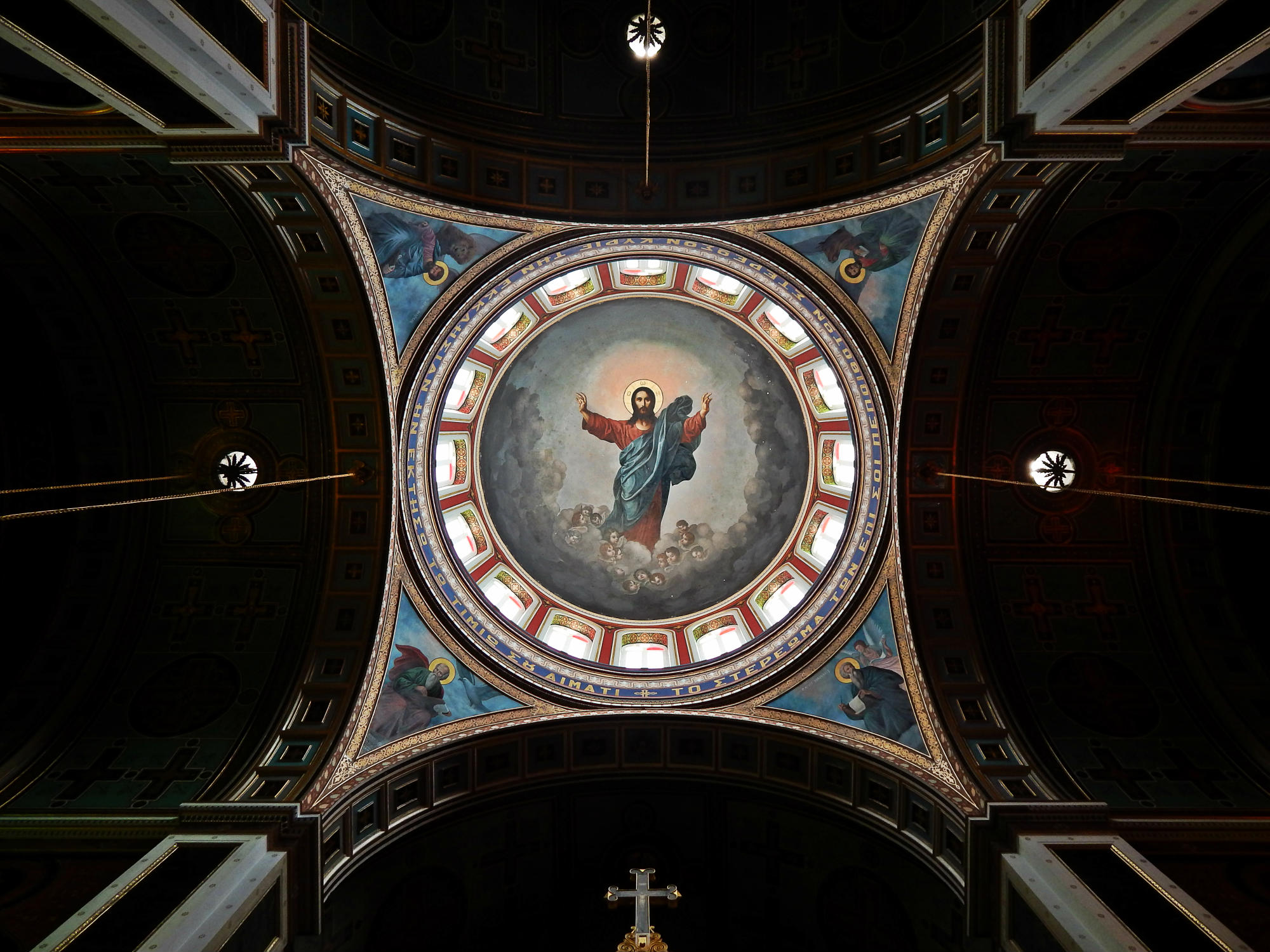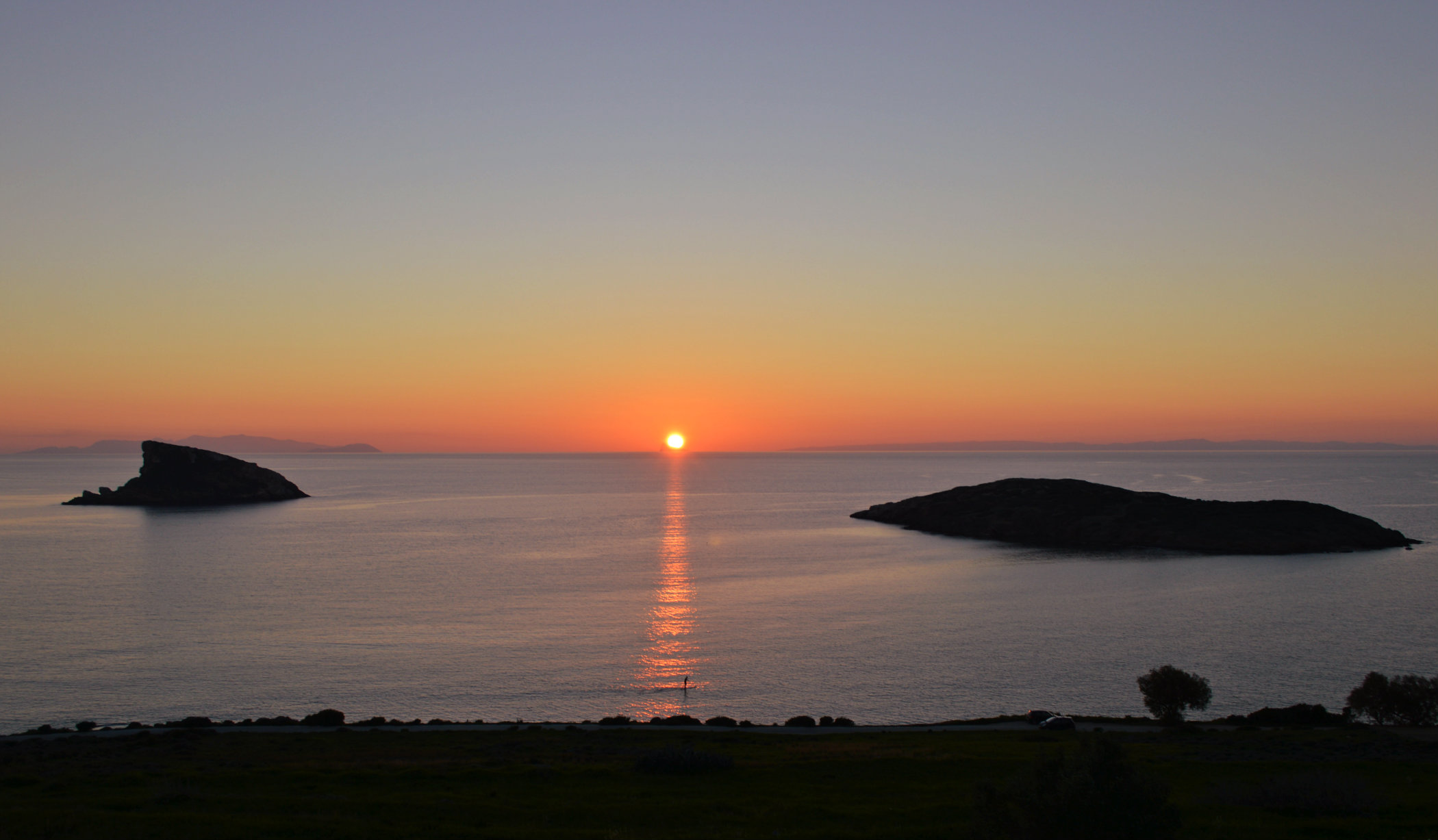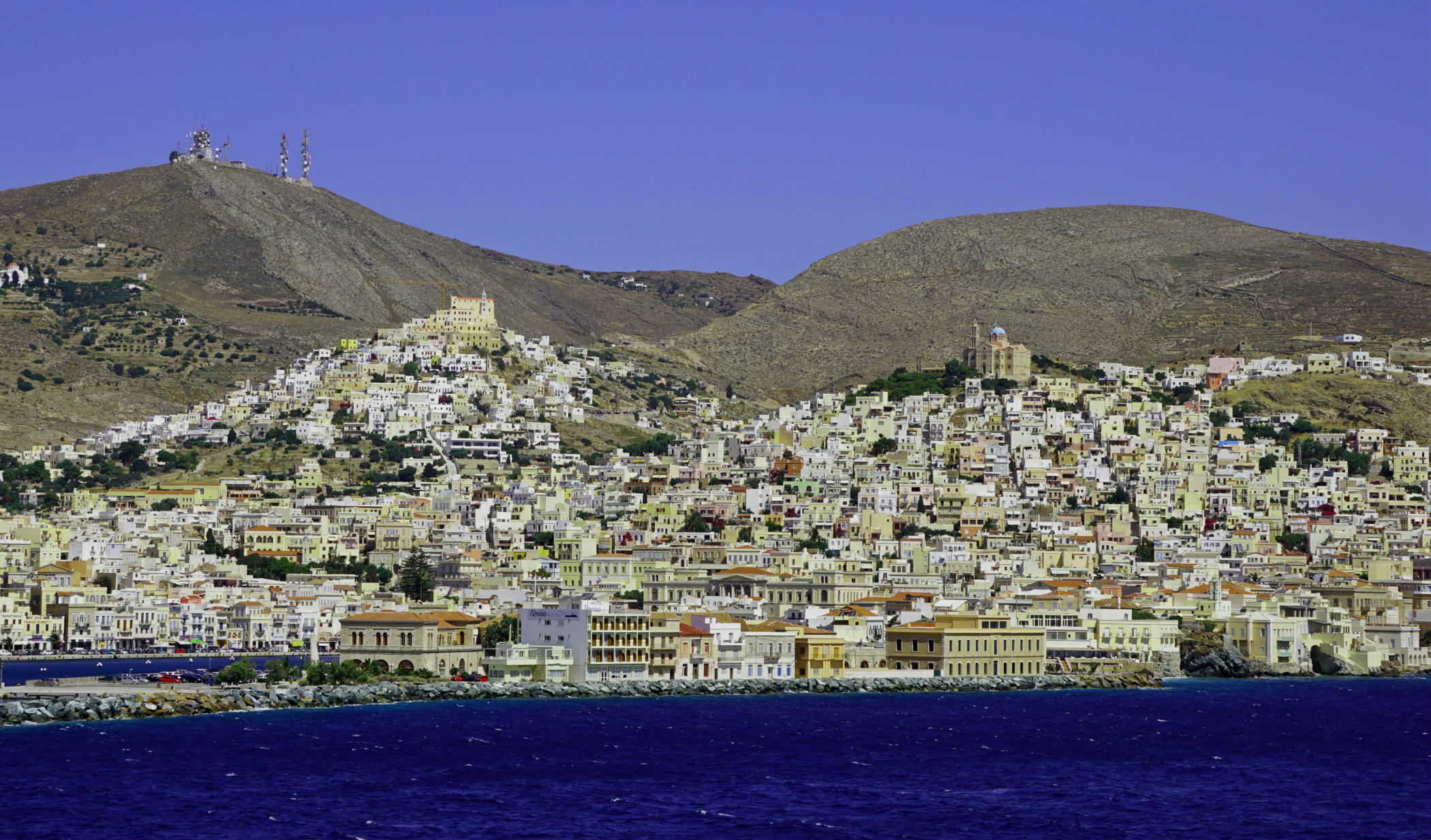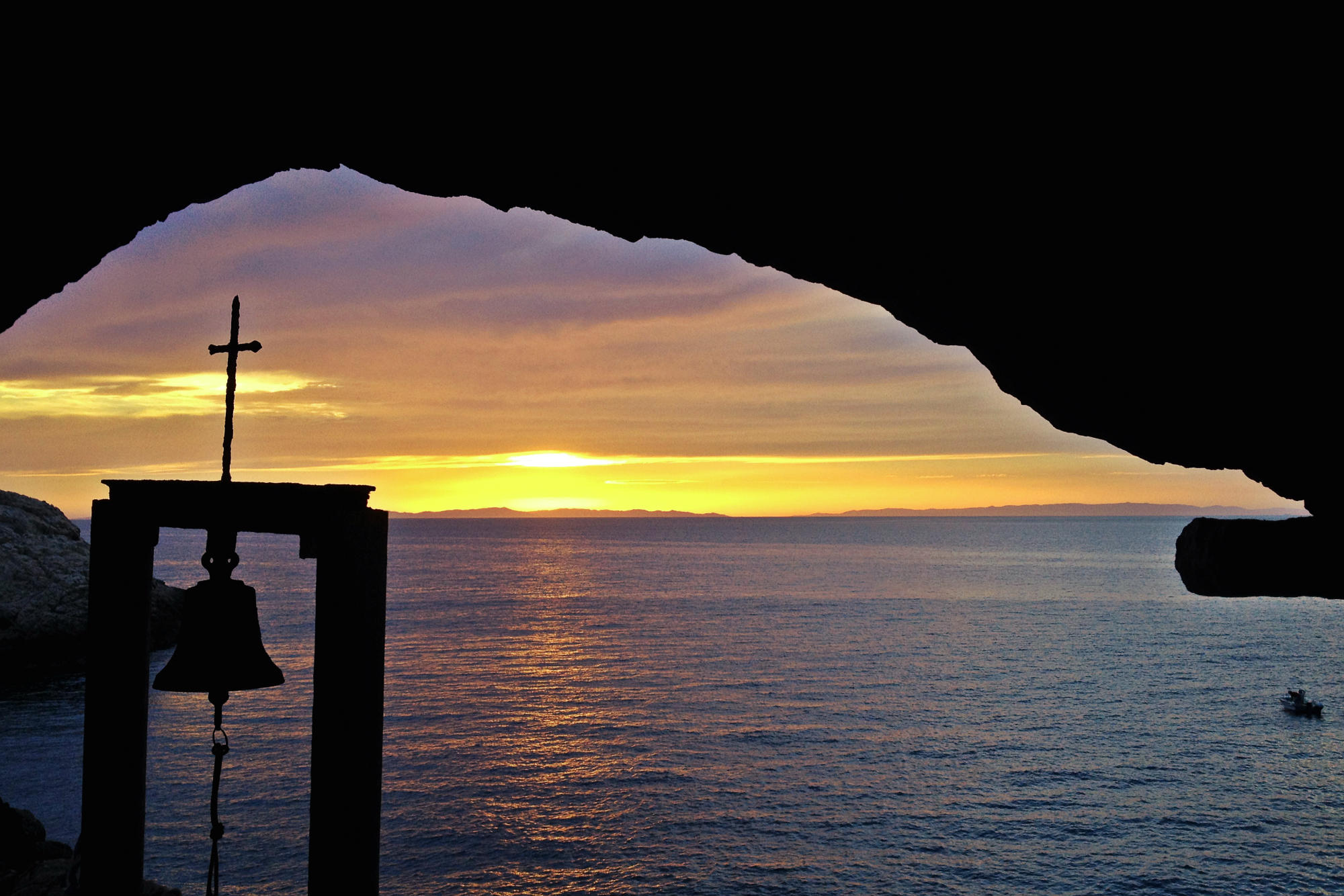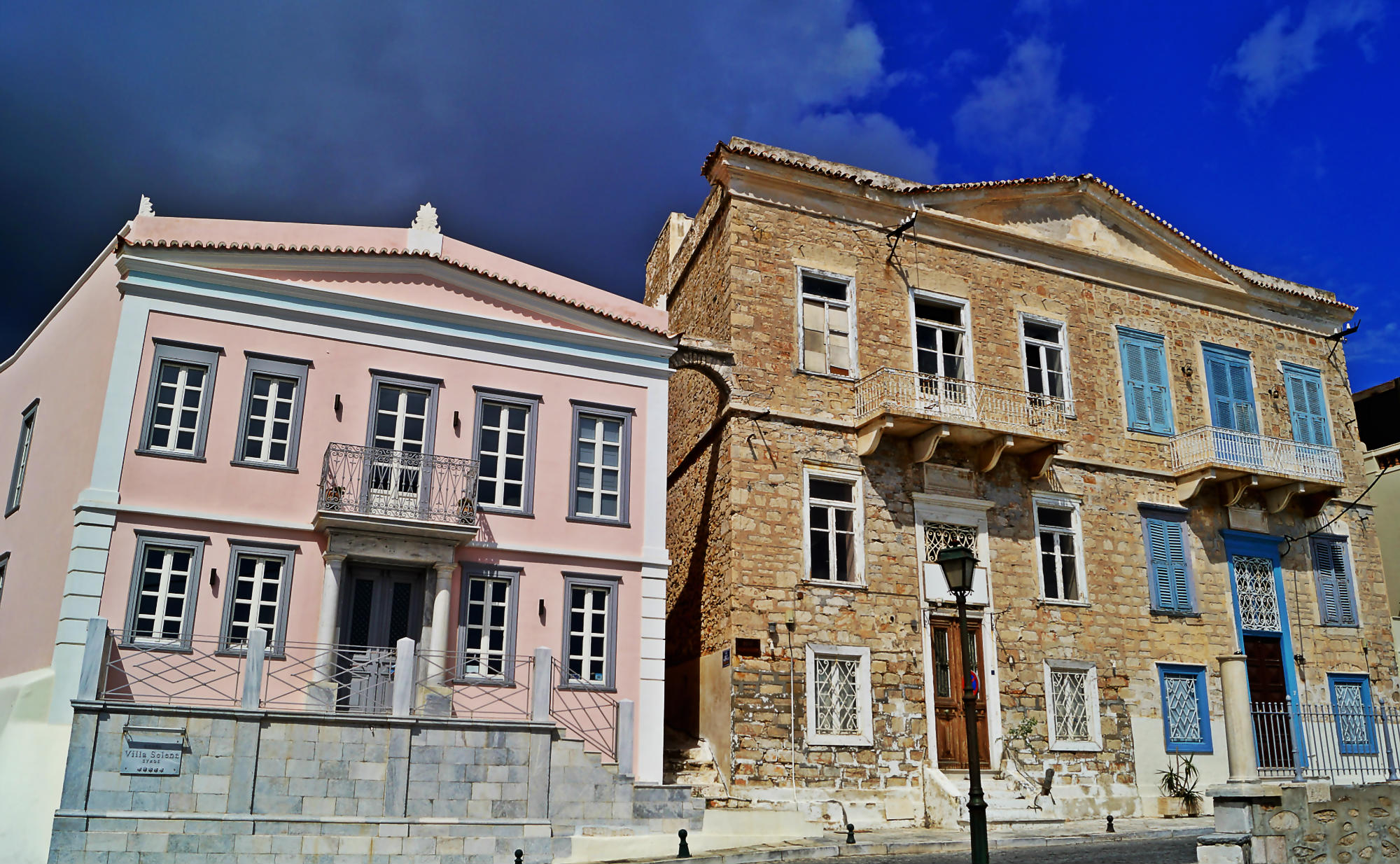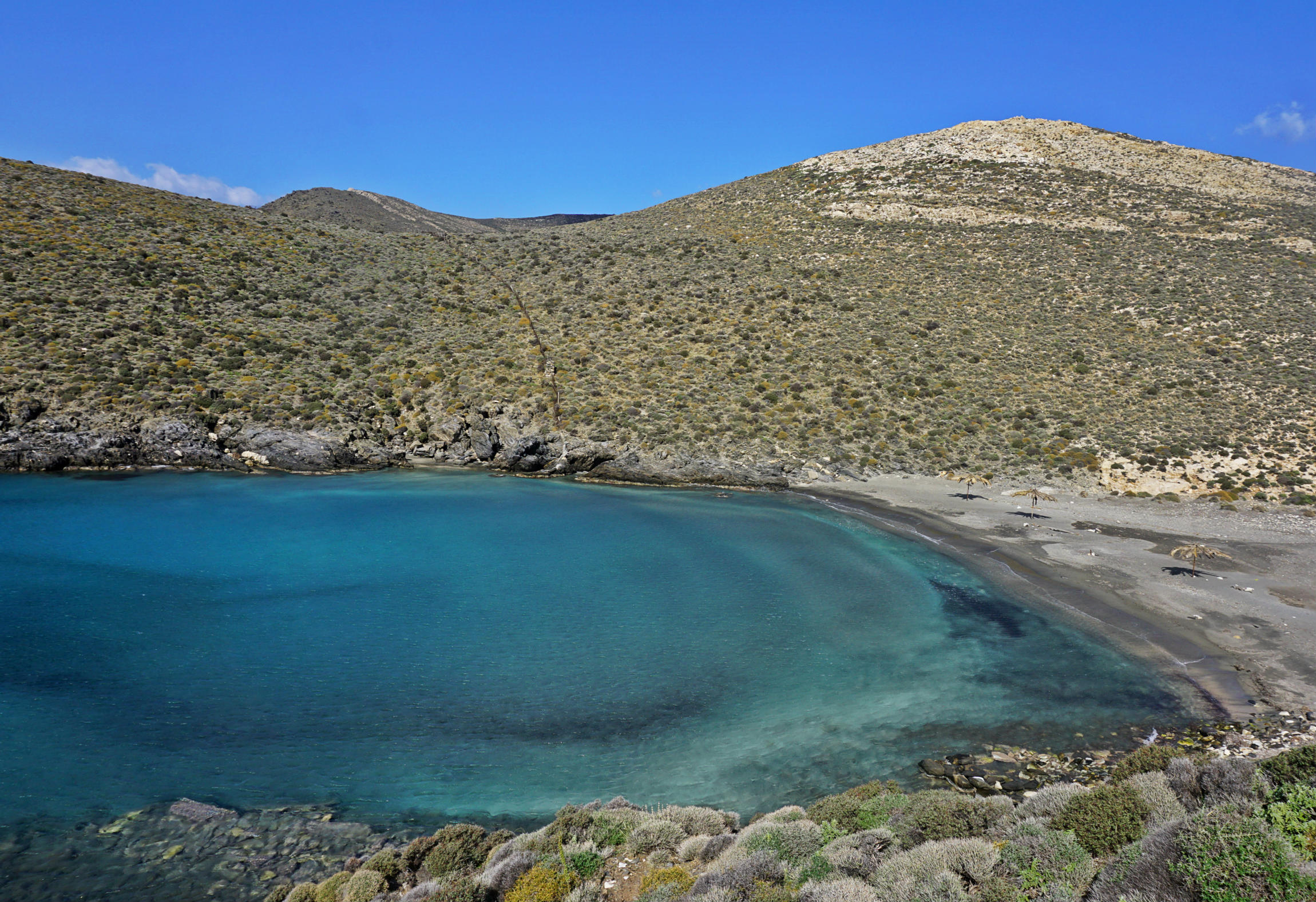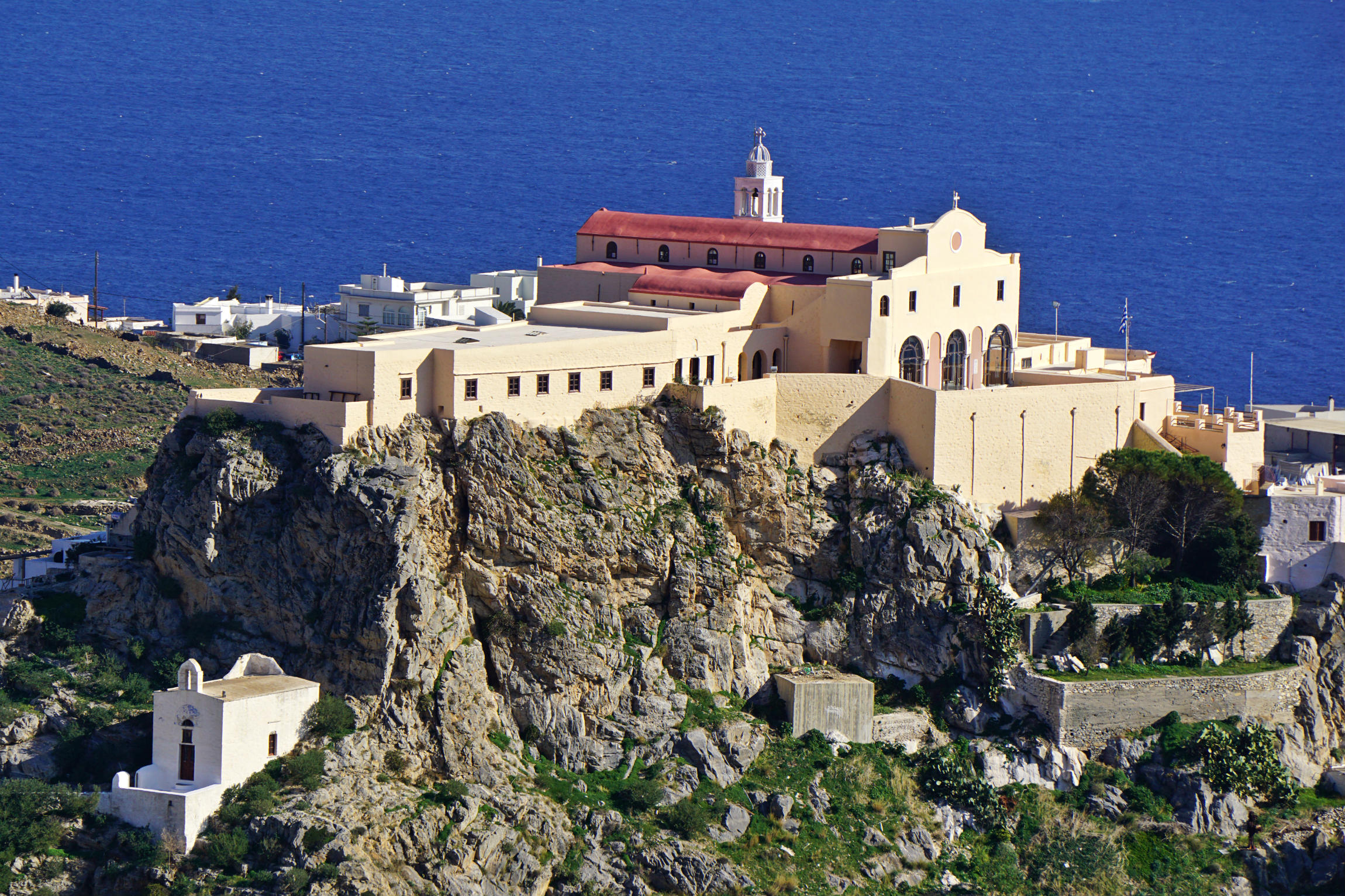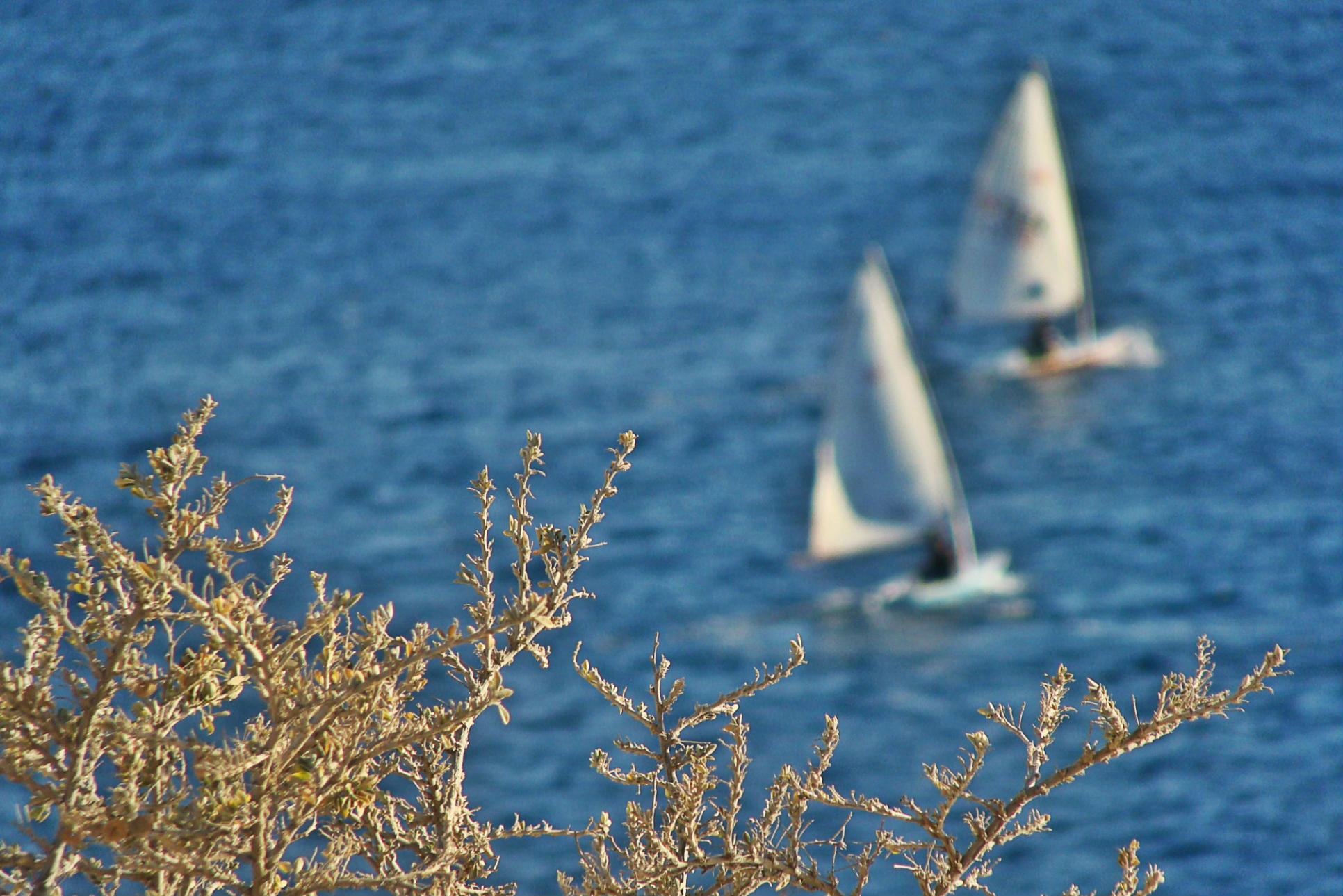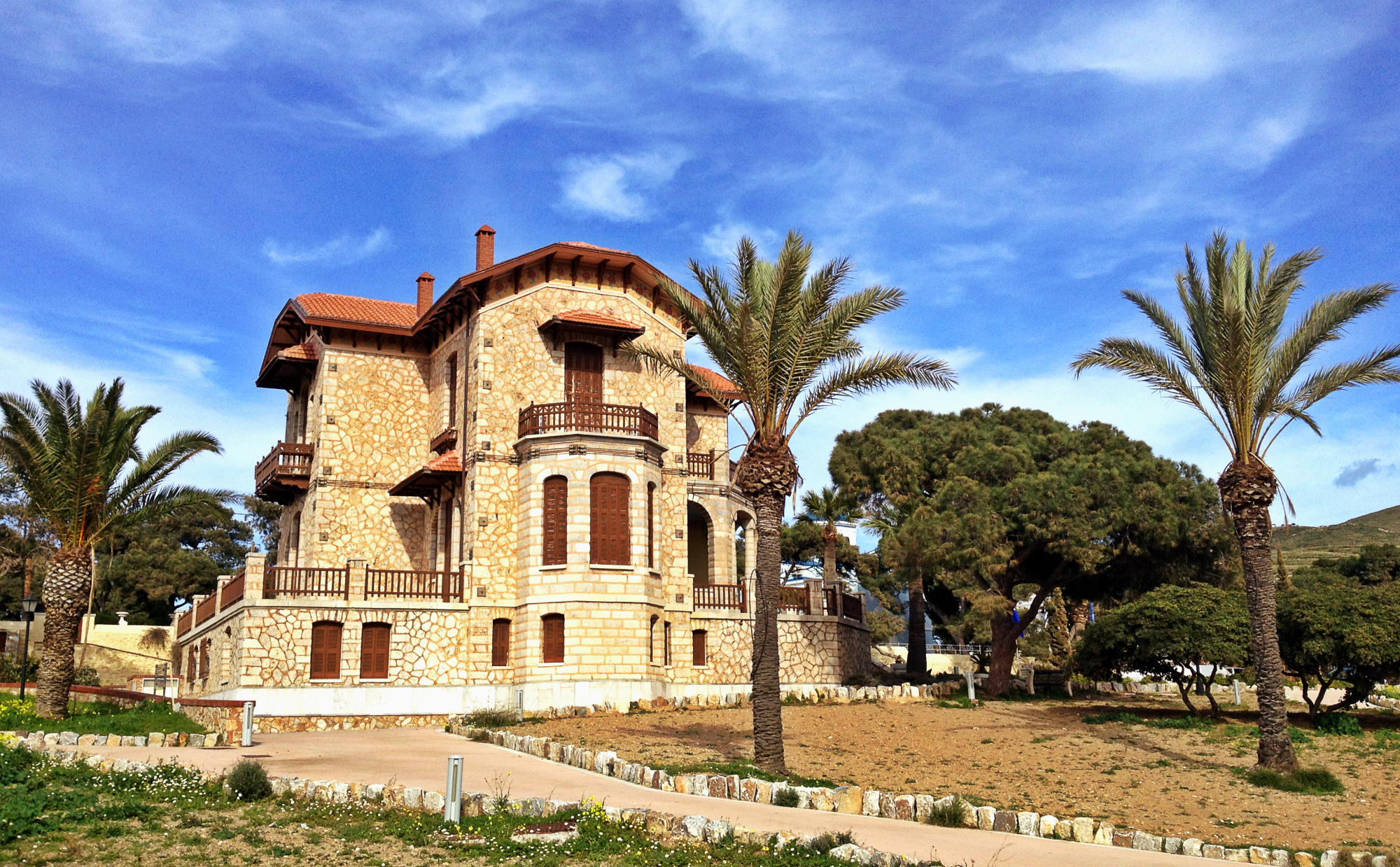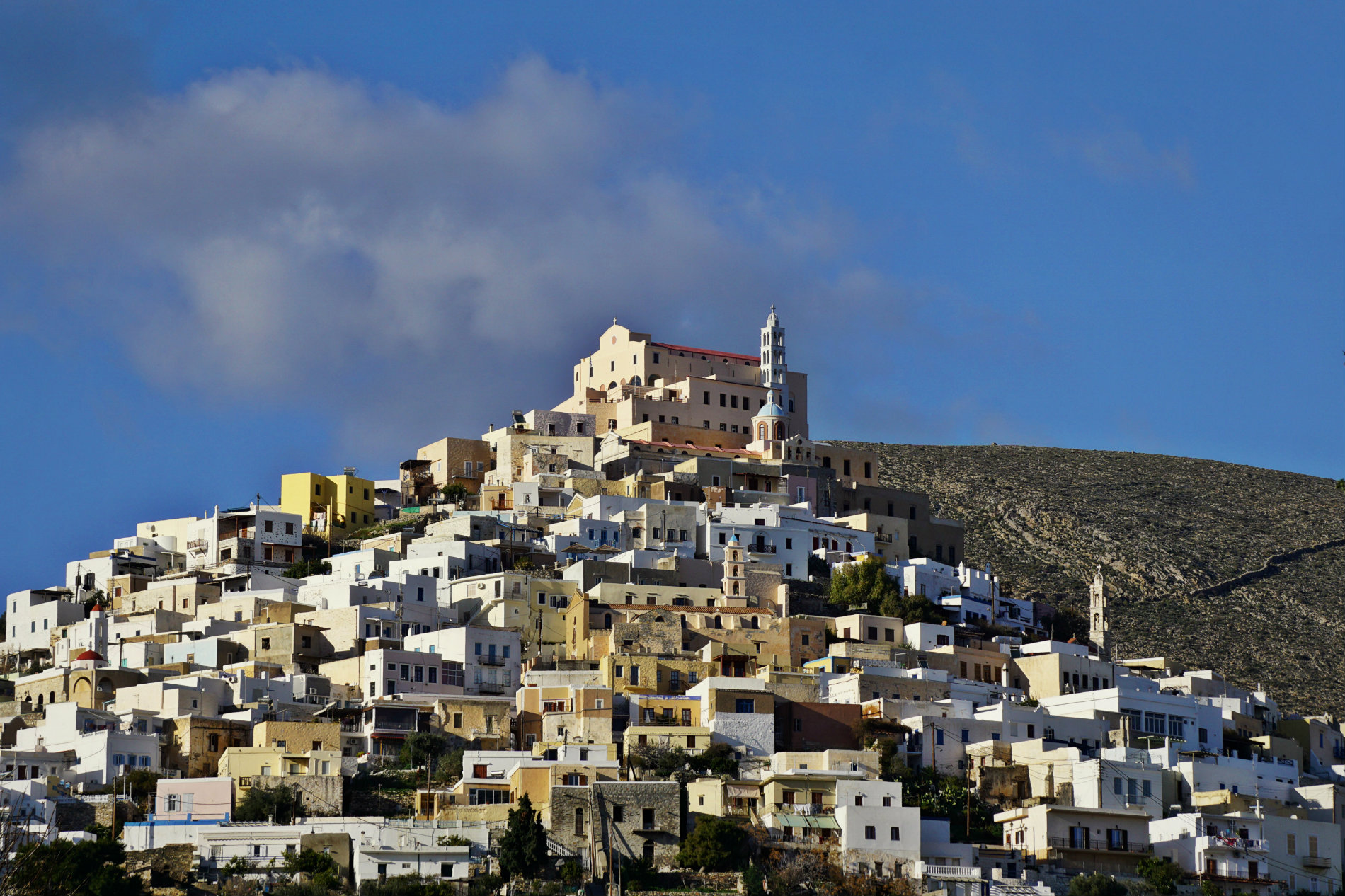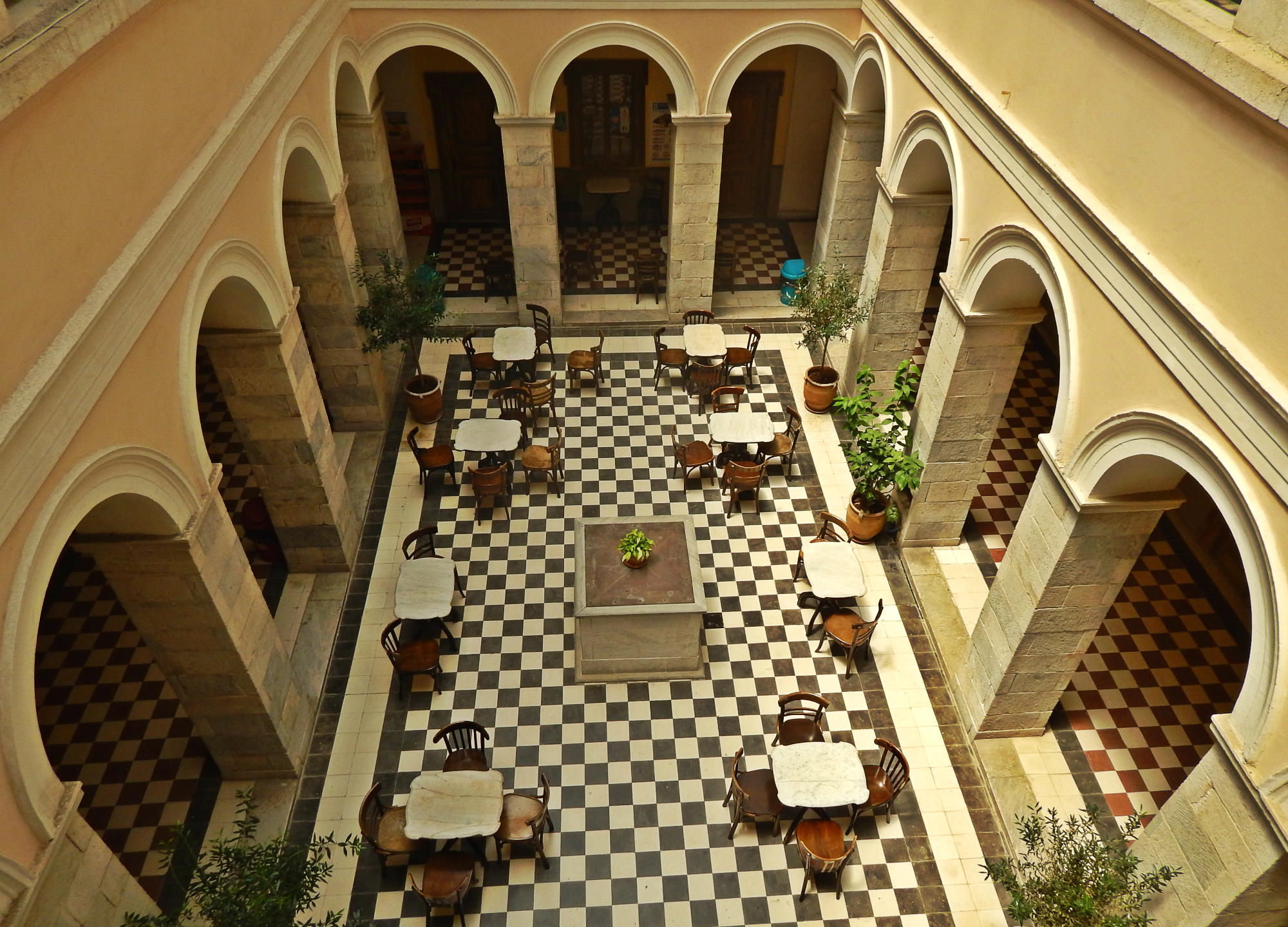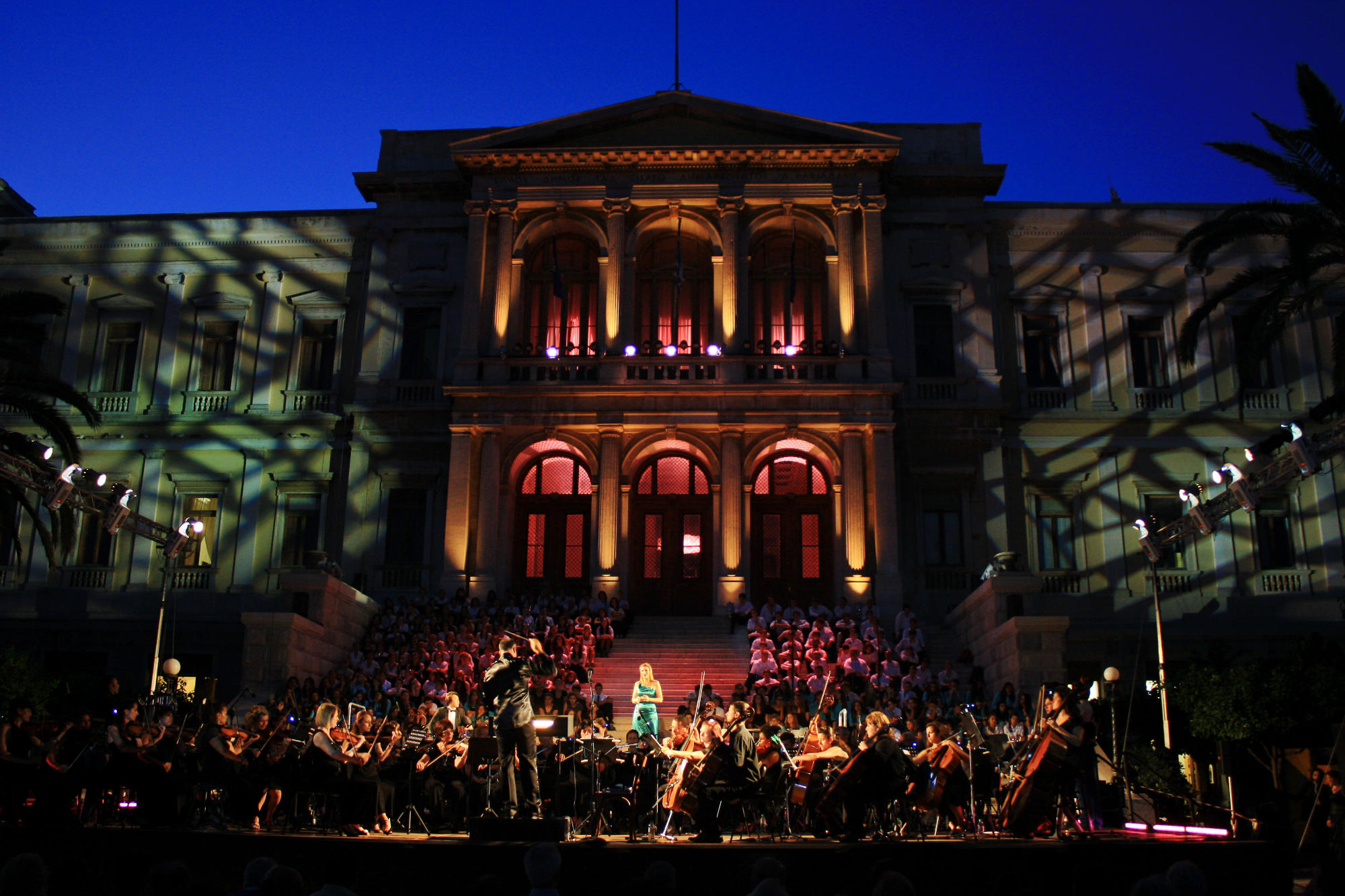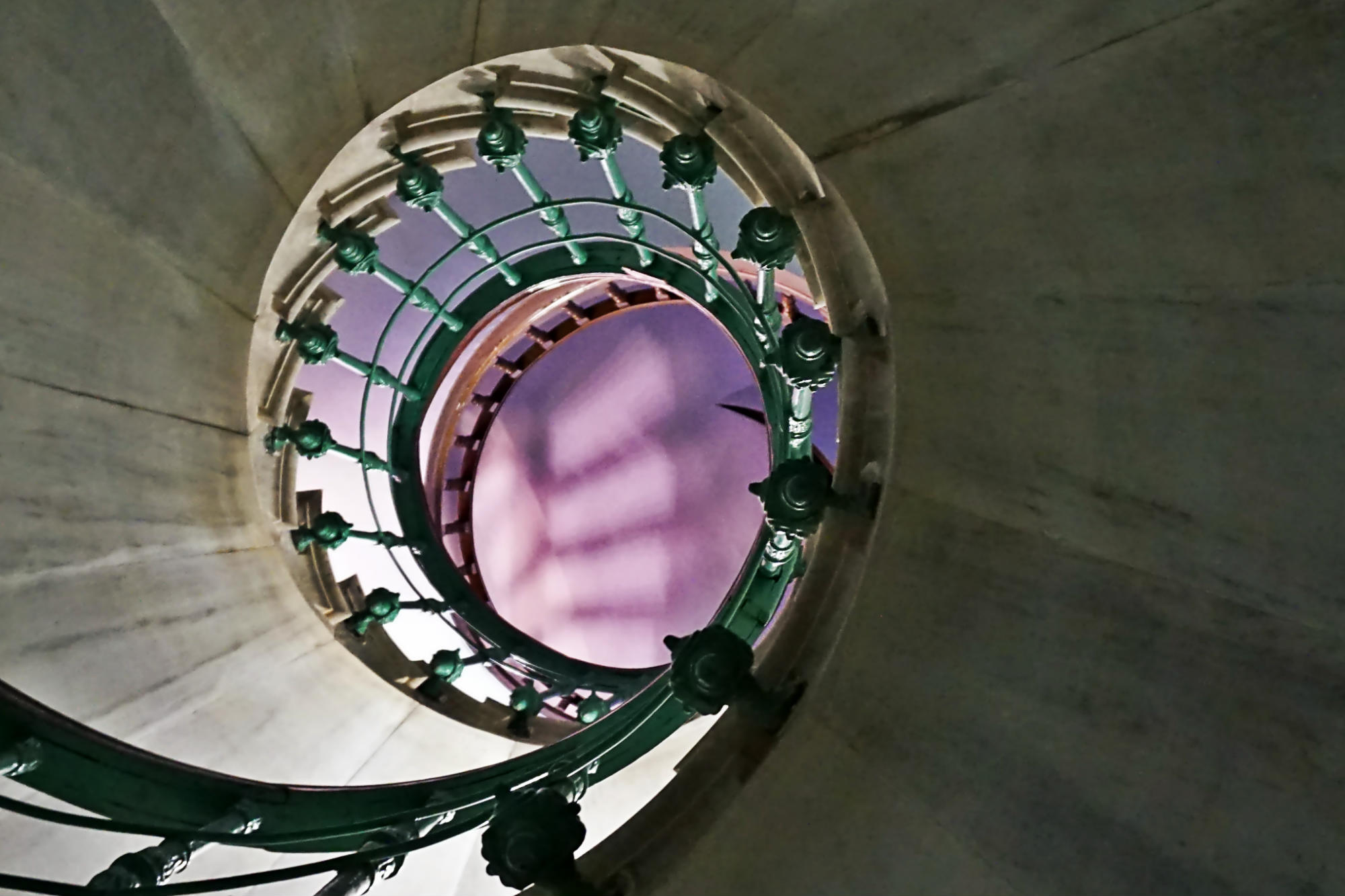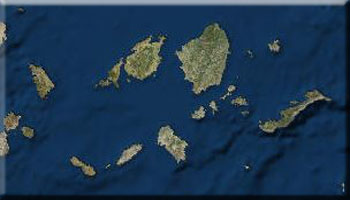Ermoupolis:
- Plateia Miaouli is marked by a bust of the revolutionary hero Andreas Miaoulis (1889) and a marble bandstand (1907) with depictions of Apollo and Muses in relief.
- Ermoupolis City Hall is one of the largest municipal seats in Greece. This architectural gem was designed by the Bavarian court architect Ernst Ziller. Groundbreaking for the building was held in 1876 and construction was completed in 1898.
- The Ermoupolis Archaeological Museum features a collection of Early Cycladic and Byzantine finds.
- The Ecclesiastical Museum of the Metropolis, witch is house within the church of Agios Nikolaos, while the bookstore of the Holy Metropolis, "Theognosia", is located close to the church, opposite to the Memorial for the Tomb-less Fighter in the smalla garden.
- The Ermoupolis Industry Museum, featuring a trully unique collection of more than 300 articles and exhibits.
- The Cyclades Historical Archive dates from 1821 and is an important resource for scholars and visitors.
- The Municipal Cultural Center (formerly the Hellas Club) is housed on the first floor of a building next to city hall that was designed by the Italian architect Pietro Sampo (1862-63). The Museum of Cycladic Art Replicas is housed here and its collection features Protocycladic finds from around the island. The center's Ballroom is decorated with ceiling and wall murals.
- The Municipal Library in the cultural center's basement counts 35,000 volumes of rare and old books in its collection. The library's forecourt is marked by busts of Emmanuil Roidis, Yoryos Souris, Eleftherios Venizelos, Petros Protopapadakis, Konstantinos Volanakis, Andreas Syngros and other distinguished Greeks.
- Metamorphosis Sotiros, the Orthodox cathedral, is an imposing triple-apsed domed basilica built in 1824, chronologically the first modern church built on the island.
- The Church of the Koimissis Theotokou (Orthodox) was built in 1828-29 and houses the famed icon of the Dormition of the Virgin painted by El Greco.
- The Merchant Marine Academy is an impressive rectangular building with marble façade at Nisaki. Greece's first telegraph station was set up in this building in 1858.
- The Customs and Transit Warehouses dominate the Old Harbor. Built in 1834, these facilities now house the customs office and the Cyclades Art Gallery which was established in 1994.
- The Evangelistria church (Catholic) is a triple-apsed basilica built in the early 19th century. It serves as the main parish for Ermoupolis's Catholic population.
- The Apollo Municipal Theatre was built in 1864 but designed earlier by the Italian architect Pietro Sampo and displays strong Italian and French influences.
- The Church of Ayios Nikolaos (Orthodox) rises on the edge of the Vaporia quarter and was finally completed in 1905, sixty-one years after ground was broken. This imposing structure ranks among the five largest churches of Greece. On the grounds there is a sculpture by Y. Vitalis of the Unburied Fighter (1888), the first monument dedicated to those who took part in the Greek independence revolt, and busts of the Rethymni brothers, two noted benefactors from the island of Kassos.
- The Vaporia quarter is considered one of the city's sights because of the striking architecture and grandeur of its 19th-century neoclassical mansions and former residences of the island's wealthy merchants.
- The Orthodox Cemetery of Ayios Yoryios in the Neapoli district is noted for its marble graves and monuments, including a number of chapels, sculptures, and busts. The Catholic and Commonwealth cemeteries nearby are also worth visiting.
- The Anastasi Sotiros church is a cruciform domed structure in the Byzantine style. Built in 1879 and completed in 1909, it dominates Dili Hill as it rises over the Ermoupolis harbor.
- The Boatyards or Τarzanas, adjacent to the Neorio shipyards.
- The Loimokathartirio, an abandoned complex at the southern end of the port in the Lazaretta district dates from 1834 and was used as a temporary quarantine for new arrivals. From the late 19th century through the early postwar years, it was used as a prison and asylum, while earlier, during the Cretan revolt in 1866 it had been used to house Cretan refugees.
Ano Syros:
- The Catholic church of Ayios Yoryios atop the hill is the cathedral for the island's Catholic faithful.
- The Historical Archive of the Catholic See once houses the Clerical School (1837). It's only open to visitors in the summer months and is noted for its impressive collection of 16th-century manuscripts.
- The Ano Syros Archive houses documents pertaining to the founding of the first municipality of the modern Greek state.
- The Capuchin Monastery (Catholic) includes the church of Ayios Ioannis, which dates from 1635.
- The Jesuit Monastery includes the church of the Panayia Karmilou, which was built in 1740. The monastery houses a library with thousands of volumes as well as scrolls and rare manuscripts.
- The Koimitirio Angelon (Angels' Resting Place) is the former cemetery where unbaptized children were buried and is located in the northern section of the town.
- The bust of Pherecydes in Ano Syros and the cave where he wintered at Kyperoussa in Ano Meria.
- The churches of Ayia Triada and Ayios Nikolaos in Ftohou are unique.
- In Markou Vamvakari square, the composer's home houses the Markos Vamvakaris Museum, a small museum dedicated to his life and work.
- The old French Hospital at the foot of Ano Syros.
Other Syros Sights:
- At Ai Yoryis cove in the sheltered Ahladi bay, figures carved by old mariners.
- Ayia Thekla church at Megas Yialos.
- The neoclassical mansions at Dellagrazia (Poseidonia), Parakopi, Chroussa, and Episkopeio feature adorned facades and landscaped gardens. The Yiannikoglou Villa, Valmas Villa, Talaki Residence, Yoryiadis Tower, Vafeiadakis Residence, Velissaropoulos Residence, and Krinos, Petritsis, and Rethymni mansions stand out.
- At Poseidonia, the City Hall (Yoryiadis Tower).
- Τhe Catholic church of Ayios Petros.
- Τhe 19th-century Orthodox church of Ayios Ioannis marked by busts of Y. Veltsos and T. Petrokokkinos.
- At Galissas, the Catholic chapels of Ayia Pakou and Ayios Stefanos, which is reached by boat or overland hike.
- At Kini, the Aquarium.
- Τhe Orthodox convent of Ayia Varvara with its weaving workshops.
- At Episkopeio, the Orthodox church of Profitis Ilias where the writer Ilias Venezis was wed.









